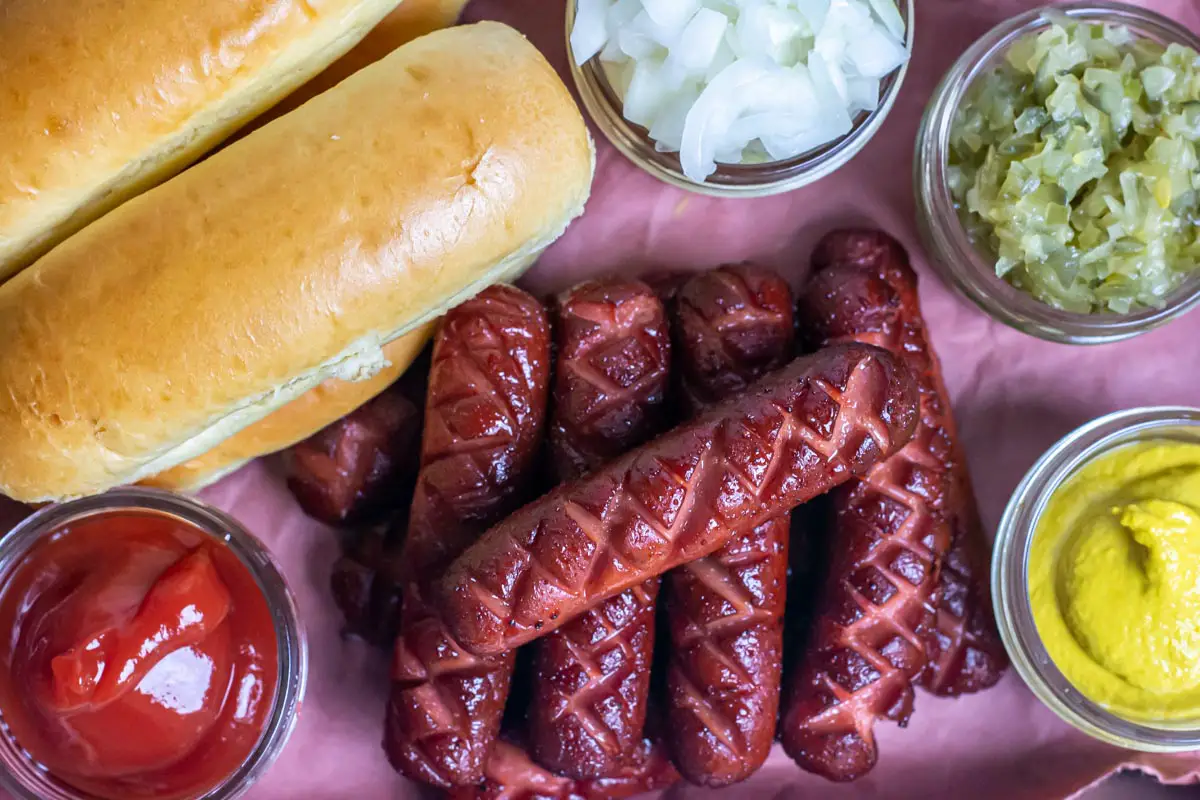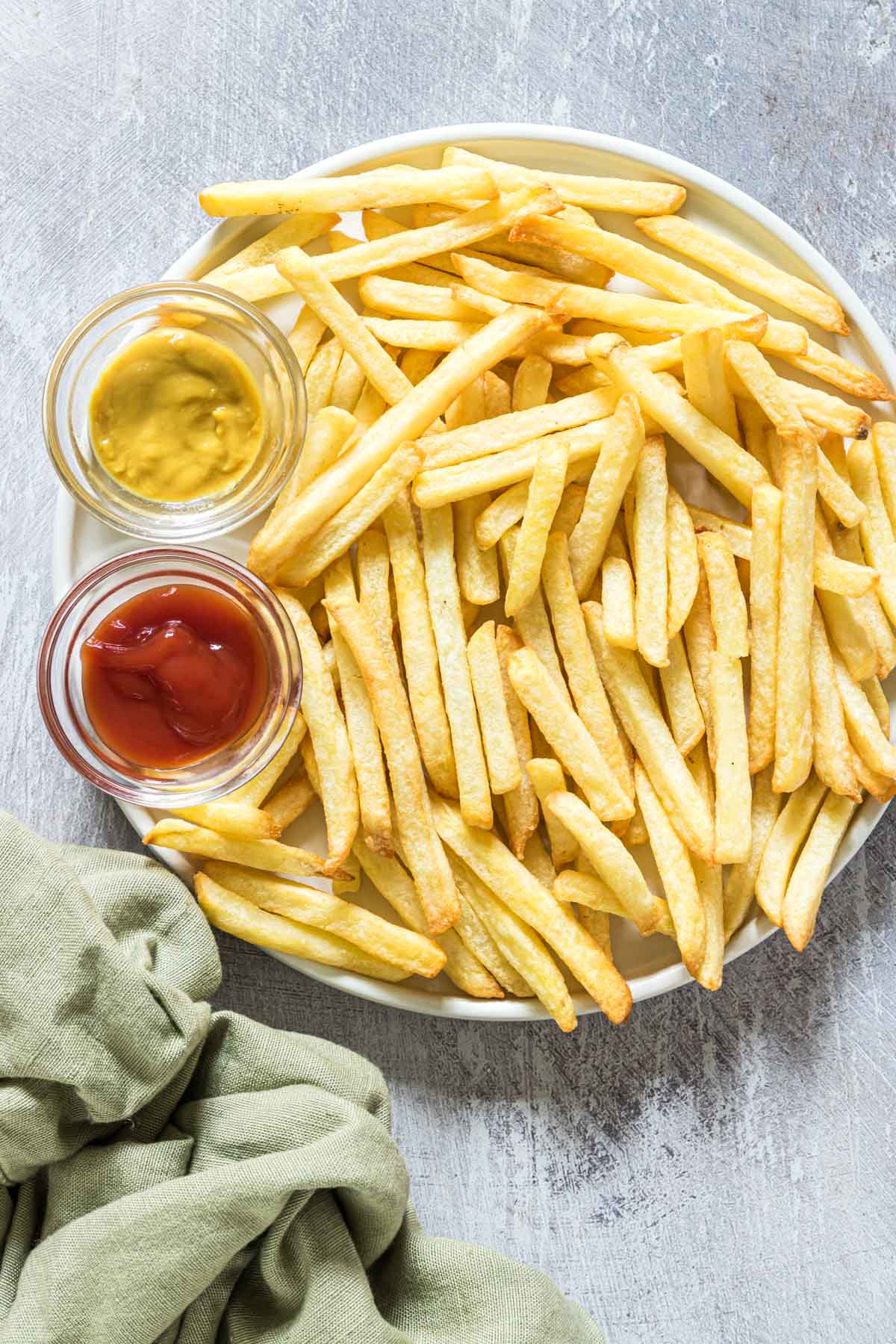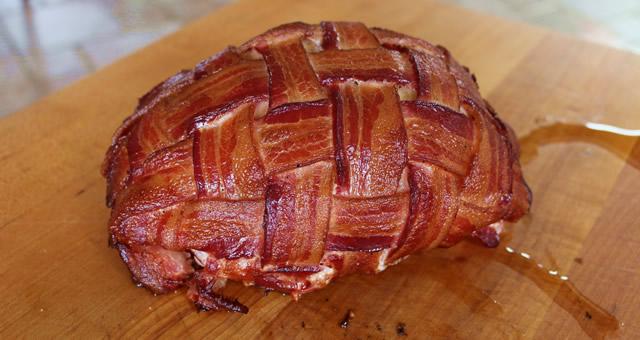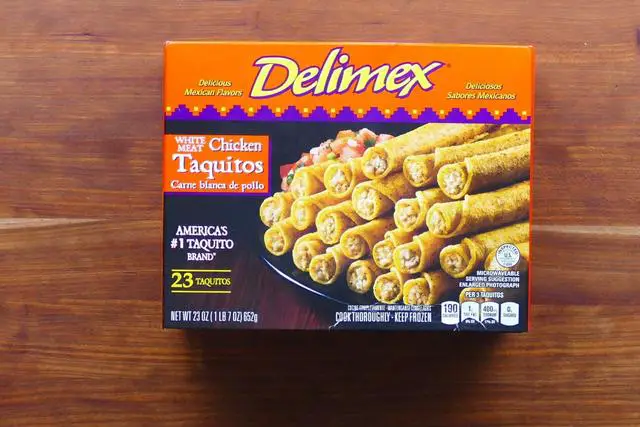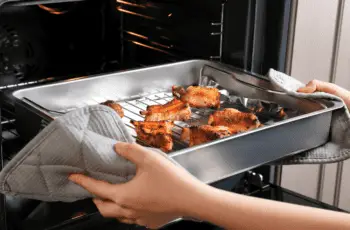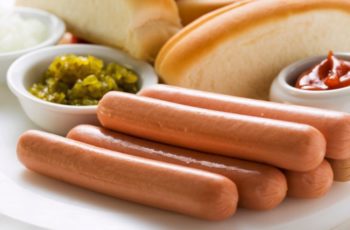
Picture yourself cramped on your tiny balcony, craving that unmistakable aroma of charcoal-kissed meat and the satisfying sizzle of a perfectly grilled steak. Suddenly, your neighbor fires up their massive outdoor kitchen setup, and jealousy hits like a punch to the gut. Sound familiar? Grab your favorite beverage and settle in — I’m about to change your grilling game forever with the compact powerhouse that is the Weber Smokey Joe charcoal grill.
This little black kettle has been quietly revolutionizing backyard barbecues since 1952. It’s like David taking on Goliath, except David wins every time and serves up mouth-watering ribs afterward.
What Makes the Weber Smokey Joe Special?

View Deal Here
Check Price on Amazon
The Weber Smokey Joe grill isn’t just another portable grill trying to punch above its weight class. It’s the real deal – a miniature version of Weber’s legendary kettle design that launched a thousand backyard cookouts.
At 14 inches in diameter, this compact powerhouse delivers authentic charcoal flavor without hogging your entire patio. The porcelain-enameled lid and bowl resist rust and retain heat like a champion. Those signature Weber dampers? They’re here too, giving you precise temperature control that’ll make your gas-grilling friends green with envy.
The magic lies in the simplicity. No bells, no whistles, just pure grilling excellence wrapped in a portable package. It’s like having a Swiss Army knife for outdoor cooking – versatile, reliable, and always ready for action.
My Time with the Weber Smokey Joe

Let me be straight with you – I’ve been testing grills for over a decade, and the Weber Smokey Joe consistently surprises me. Here’s my honest take after countless cookouts, camping trips, and late-night burger sessions.
The Outstanding Stuff
Build Quality That’ll Outlast Your Car: This little grill is built like a tank. The porcelain enamel coating isn’t just pretty – it’s practically bulletproof. I’ve seen 20-year-old Smokey Joes that still look fresh in the showroom. Weber’s 10-year warranty on the bowl and lid isn’t just marketing fluff; it’s a promise they keep.
Heat Retention That Defies Physics: For something this small, the heat retention is bonkers. Once you get those coals glowing, this baby holds temperature like a much larger grill. I’ve maintained a steady 350°F for over an hour with just one chimney of charcoal.
Flavor That’ll Ruin You for Gas Grills: The taste difference is night and day. That authentic smoky flavor you get from real charcoal? Smokey Joe delivers it in spades. Your neighbors will start “accidentally” wandering over around dinner time.
The Learning Curve
Size Matters (But Not How You Think): With 147 square inches of cooking space, you’re looking at 4-5 burgers max. But here’s the thing – this limitation makes you a better cook. You learn proper timing, heat management, and the art of cooking in batches.
Charcoal Management Takes Practice: Getting the charcoal amount just right takes a few tries. Too much and you’ll char everything. Too little and you’ll be waiting forever. We’ll cover the sweet spot later.
Weber Smokey Joe Accessories

The beauty of the Smokey Joe ecosystem isn’t just the grill – it’s the thoughtful accessories that make your life easier.
Essential Accessories
Weber Smokey Joe Grill Cover: Think of this as insurance for your investment. The premium cover ($28) protects against weather, UV damage, and curious raccoons. It’s a superhero cape for your grill.
Chimney Starter: This isn’t optional – it’s mandatory. The compact Weber chimney starter ($15) lights your charcoal evenly without lighter fluid. Your food will taste better, and you’ll look like a grilling pro.
Carry Bag: The official Weber bag ($28) turns your Smokey Joe into the ultimate portable setup. Padded, weatherproof, and designed specifically for this grill. Beach trips and camping adventures just got better.
Grill Grates: Third-party grill grates ($40-60) can boost heat retention and create better sear marks. Not essential, but fun for grill geeks.
Weber Smokey Joe Stand: Some folks jerry-rig stands for easier cooking height. Weber doesn’t make an official one, but creative types have built some impressive setups using tripods or custom metalwork.
Weber Smokey Joe Grill Parts

One of Weber’s biggest advantages is parts availability. Break something? No problem. Need an upgrade? They’ve got you covered.
Common Replacement Parts
Cooking Grate: $15-20 Charcoal Grate: $12-15 Ash Catcher: $10-12 Damper Assembly: $8-15
The fact that you can still buy parts for 20-year-old grills speaks volumes about Weber’s commitment to their customers. Try getting parts for that no-name grill from the big box store – good luck with that.
Can You Use a Weber Smokey Joe as a Smoker?

Short answer: absolutely, but with some caveats.
The Weber Smokey Joe 14-inch grill can handle basic smoking tasks. I’ve pulled pork, ribs, and even a small brisket on mine. The key is understanding its limitations and working within them.
Smoking Setup Tips
Two-Zone Cooking: Push your coals to one side and place a water pan on the other. This creates indirect heat perfect for low-and-slow cooking.
Wood Chunk Strategy: Use smaller wood chunks rather than chips. They burn longer and provide more consistent smoke in the compact space.
Temperature Management: Keep the bottom damper about half-open and adjust the top vent for temperature control. Expect 225-250°F for smoking – perfect for most applications.
Reality Check: You’re not going to smoke a whole turkey on this thing. But for smaller cuts and shorter smoking sessions, it performs admirably.
How Much Charcoal for Weber Smokey Joe?

View Deal Here
Check Price on Amazon
This is the million-dollar question that stumps beginners and occasionally trips up veterans.
For Direct Grilling (Burgers, Steaks, Hot Dogs)
- Amount: 40-50 briquettes or about 1.5 pounds of lump charcoal
- Setup: Fill the charcoal basket about 75% full
- Cook Time: 45-60 minutes of high-heat cooking
For Indirect Cooking (Chicken, Pork Chops)
- Amount: 30-40 briquettes or 1 pound of lump charcoal
- Setup: Push coals to one side, create a cool zone
- Cook Time: 60-90 minutes of medium-heat cooking
For Smoking (Ribs, Pulled Pork)
- Amount: Start with 25-30 briquettes, add 6-8 every hour
- Setup: The Snake method or the minion method works well
- Cook Time: 3-6 hours, depending on the cut
Pro Tip: Always start with less than you think you need. You can add more charcoal, but you can’t take it away. I learned this the hard way after cremating more burgers than I care to admit.
How to Use a Weber Smokey Joe

Let me walk you through a typical grilling session. This isn’t rocket science, but getting the basics right makes all the difference.
Pre-Game Setup (10 minutes)
- Clean the grill grates with a grill brush
- Check your charcoal supply – nothing worse than running out mid-cook
- Set up your workspace with tools, plates, and beverages within reach
- Remove the cooking grate and open all dampers
Lighting the Fire (15 minutes)
- Fill your chimney starter with the appropriate amount of charcoal
- Stuff a newspaper underneath and light it up
- Wait for the coals to ash over – usually 10-15 minutes
- Pour the coals into the grill and arrange as needed
Cooking Phase (Variable)
- Replace the cooking grate and let it heat up for 2-3 minutes
- Adjust dampers for your target temperature
- Start cooking and resist the urge to constantly flip everything
- Monitor doneness with an instant-read thermometer
Clean-Up (5 minutes)
- Close all dampers to extinguish coals
- Let everything cool completely
- Empty the ash catcher once cold
- Cover or store your grill
The whole process becomes second nature after a few sessions. Soon you’ll be grilling like you’ve been doing it for decades.
Weber Smokey Joe vs Weber Traveler
| Feature | Weber Smokey Joe | Weber Traveler |
|---|---|---|
| Type of Grill | Charcoal | Gas |
| Cooking Surface | Varies (e.g., 14.5" or 18") | 320 sq. inches |
| Ignition | Manual (lighter fluid or chimney starter) | Push-button |
| Portability | Small and lightweight, but not foldable | Foldable design for easy transport |
| Price Point | Around $50 | Around $400 |
| Flavor | Superior flavor from charcoal | Good, but not the same as charcoal |
| Convenience | Less convenient due to charcoal use | Highly convenient due to gas and push-button ignition |
| Additional Features | Classic kettle design | Built-in thermometer |
Weber Smokey Joe vs Jumbo Joe
| Feature | Weber Jumbo Joe | Weber Smokey Joe |
|---|---|---|
| Cooking Diameter | 18 inches | 14 inches |
| Cooking Space | 240 sq. inches | Not specified, but smaller |
| Price | ~$80 | ~$50 |
| Portability | Reasonably portable | Truly portable |
| Ideal For | Entertaining groups, larger cuts of meat, more than 4 people | Couples or small families, any adventure, small meals |
| Charcoal Usage | Uses more charcoal | Uses less charcoal |
Weber Smokey Joe vs Kettle
| Feature | Weber Smokey Joe | Full-Size Weber Kettle |
|---|---|---|
| Cooking Capacity | Smaller | 360+ square inches |
| Heat Retention | Less | Better |
| Price | A fraction of the price | More expensive |
| Portability | Easier to store and transport | Less portable |
| Use Case | Quick meals, small spaces, complementary grill | Serious entertaining, larger meals |
| Accessories | Fewer accessories available | More accessories available |
My Experience Using It
I’ve dragged my Smokey Joe to beach houses, camping trips, tailgate parties, and countless backyard gatherings. Here are some lessons learned the hard way:
The Great Camping Disaster of 2019
Picture this: remote campsite, hungry friends, and me confidently firing up the Smokey Joe for the first time. I used way too much charcoal, created a volcano of heat, and turned perfectly good steaks into charcoal briquettes. The lesson? Less is always more with this grill.

The Tailgate Triumph
Fast forward to last falls football season. Same grill, but now I knew what I was doing. Perfect burgers for twelve people, cooked in batches while everyone else waited in line for overpriced stadium food. The Smokey Joe paid for itself that day in saved concession money.
The Apartment Balcony Solution
My friend Sarah lives in a tiny downtown apartment with a postage-stamp balcony. Her Smokey Joe lives in a corner and gets fired up twice a week for perfectly grilled dinners. She’s become the envy of her takeout-dependent neighbors.
Maintenance and Longevity

Here’s the thing about Weber grills – they’re built to last generations, but only if you treat them right.
After Each Use
- Let the grill cool completely
- Empty the ash catcher
- Wipe down the exterior if needed
- Cover or store in a dry place
Monthly Deep Clean
- Remove cooking grates and wash thoroughly
- Clean the interior with warm, soapy water
- Check the damper operation
- Inspect for any wear or damage
Annual Maintenance
- Replace worn parts as needed
- Deep clean all components
- Check and tighten hardware
- Apply high-heat spray paint to any rust spots
Follow these simple steps, and your Smokey Joe will outlast several apartments, maybe even a house or two.
Is the Weber Smokey Joe Worth It?
After thousands of words and years of testing, here’s my honest assessment: the Weber Smokey Joe charcoal grill is one of the best fifty-dollar investments you can make.
It’s not perfect – the size limitations are real, and charcoal grilling requires more effort than pushing a button. But for pure cooking performance, build quality, and value, nothing else comes close in this price range.
Pros and Cons of Weber Smokey Joe
| pros | cons |
|---|---|
|
|

View Deal Here
Check Price on Amazon
FAQs
- What’s the difference between Weber Smokey Joe Original and Premium models?
The Original uses bottom dampers for better airflow and heat control. The Premium has side vents and a lid lock, but the side vents restrict airflow and make temperature control harder. Choose the Original for better cooking performance and save $10-20.
- How much food can I cook on a Weber Smokey Joe?
The 147 square inches fit:
- 4-5 burgers
- 6-8 hot dogs
- 2-3 chicken breasts
- 1 small rack of ribs (cut in half)
Perfect for 2-4 people or cooking in batches for larger groups.
- Can I use my Weber Smokey Joe for smoking?
Yes! Use the two-zone method: push coals to one side, add a water pan on the other. Maintain 225-250°F with dampers. Works great for ribs, pulled pork, and chicken. Add wood chunks for smoke flavor.
- How long does charcoal last in a Weber Smokey Joe?
- Direct grilling: 45-60 minutes (40-50 briquettes)
- Indirect cooking: 60-90 minutes (30-40 briquettes)
- Smoking: 3-6 hours (start with 25-30, add 6-8 every hour)
- Is the Weber Smokey Joe worth buying over cheaper alternatives?
Yes. Cheap $20-30 grills lack porcelain coating, precise dampers, and warranties. They rust out in 1-2 seasons. The Smokey Joe lasts 15-20+ years, making it cheaper long-term.
- What accessories do I need?
- Essential: Chimney starter ($15), grill cover ($28), instant-read thermometer ($15-25)
- Nice to have: Carry bag ($28), long-handled tools ($20-30), grill brush ($10-15)
- How do I control temperature?
Use the dampers:
- High heat (450°F+): Both dampers fully open
- Medium heat (350-400°F): Both dampers 3/4 open
- Low heat/smoking (225-275°F): Bottom damper 1/2 open, adjust top as needed
- Can I use it on an apartment balcony?
Check your lease first – many apartments ban charcoal grills. If allowed, use a grill mat, position it away from windows, and ensure proper ventilation. Never use it in enclosed spaces.
- How do I clean and maintain it?
- After each use: Let cool, empty ash catcher, brush grates
- Weekly: Wash grates, wipe interior, check dampers
- Annual: Touch up rust spots, replace worn parts, deep clean
- What’s the best charcoal to use?
- Beginners: Kingsford Original briquettes (consistent, predictable)
- Better flavor: Hardwood lump charcoal (burns hotter, cleaner)
- Smoking: Briquettes for steady burns, add wood chunks for flavor
Final Thoughts
This little black kettle has sparked countless friendships over shared meals, turned apartment dwellers into backyard chefs, and proven that great flavor doesn’t require a massive investment. It’s grilling democracy in action – anyone can afford it, anyone can use it, and everyone benefits from the results.
So if you’re ready to join the ranks of Smokey Joe owners worldwide, grab one and start grilling. Your taste buds – and your wallet – will thank you. Just remember to start with less charcoal than you think you need. Trust me on this one.
Learn More About Grilling
If you want to learn more about grilling, check out these other helpful resources!


